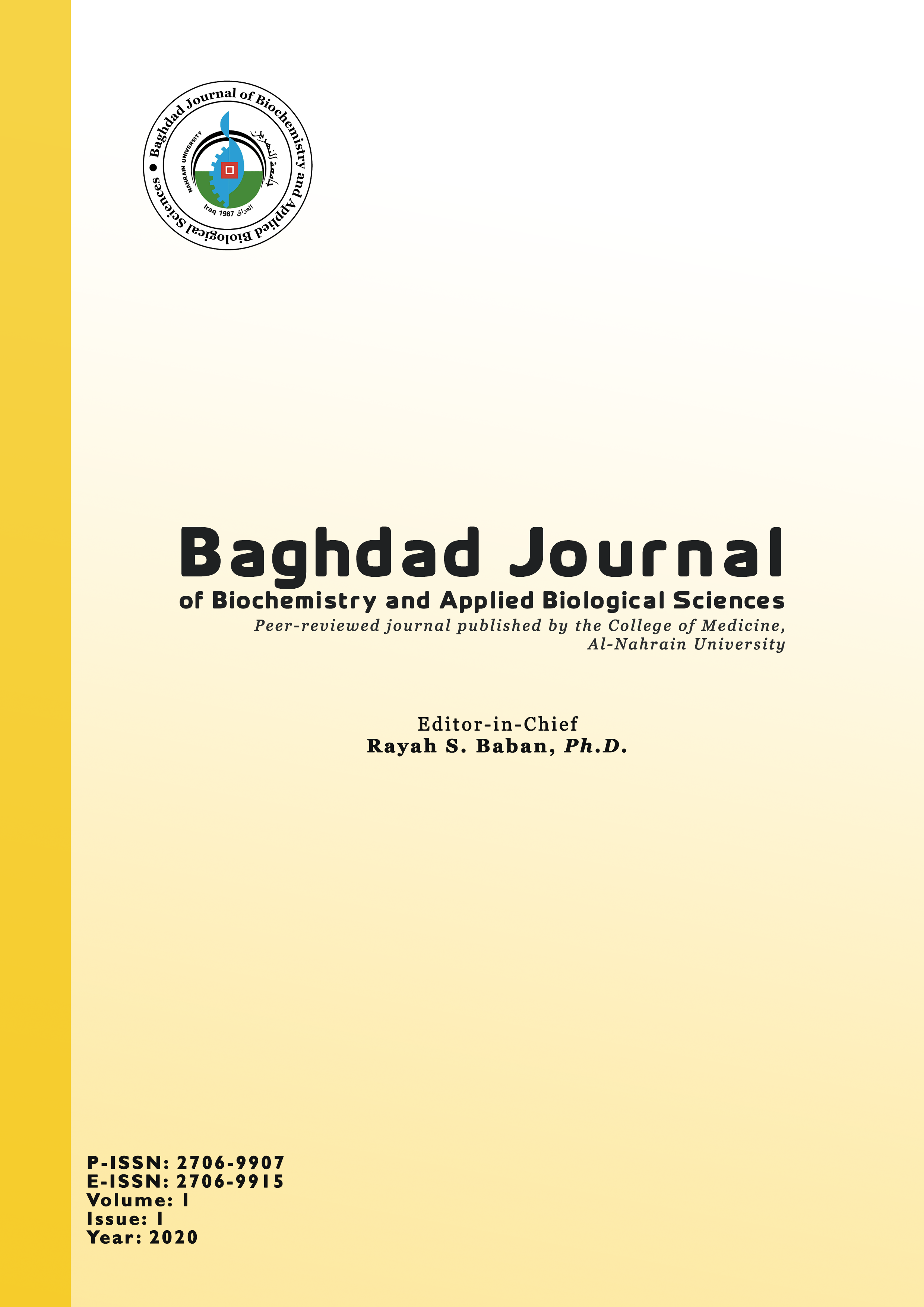The impact of skeletal muscle injury on the expression of laminin and its role in regeneration
DOI:
https://doi.org/10.47419/bjbabs.v1i01.29Keywords:
immunohistochemistry, laminin, muscle injury, muscle regenerationAbstract
Background: Laminins are high-molecular-weight proteins in the extracellular matrix; it is a major component of the basal lamina, influencing cell differentiation, migration, and adhesion. Laminin affects cell growth, besides effects in wound healing and embryonic development.
Objectives: The present study aims to assess the histological changes taking place during skeletal muscle healing.
Methods: The extensor digitorum longus muscle of 45 male rabbits was set as a skeletal muscle injury model and examined 3&6 weeks after initiation of injury. These animals were divided into three groups control (A) group with no injury, group (B) at 3rd post-injury week, group (C) at 6th post-injury week. The muscle tissues were prepared and examined histologically using H&E and immunohistochemically using Laminin antibodies. Aperio image scope software is used to analyze immunohistochemical reactivity quantitatively. The degeneration and regeneration process were overlapping with each other both in time and cellular morphological changes. Early myoblast-like cell appearance and new myotube formation were recorded during the 3rd week. By the end of the 6th-week postoperatively, the muscle histological maturation and muscle fascicles were noticed.
Results: Immunohistochemical reactivity of Laminin antibody showed an intense reactivity in the 3rd-week group while a less intense reactivity in the control and 6th-week groups'. A quantitative assessment of Laminin using Aperio soft wear showed that the 3rd-week group has an intensity of 0.724±0.03 pixel, while the 6th week's group was 0. 321±0.02 pixel and the control group was 0.293±0.02 pixel. The differences were statistically significant, P-value ≤0.0001.
Conclusion: The process of regeneration is a dynamic type where degeneration and regeneration superimposed each other.
Metrics
Downloads
References
Antonio Musarò. “The Basis of Muscle Regeneration”. Advances in Biology 2014 (2014), pp. 1–16. DOI: 10.1155/2014/612471.
E. Negroni, G. S. Butler-Browne, and V. Mouly. “Myogenic stem cells: regeneration and cell therapy in human skeletal muscle”. Pathologie Biologie 54(2) (2006), pp. 100–108. DOI: 10.1016/j.patbio.2005.09.001.
F MOURKIOTI and N ROSENTHAL. “IGF-1, inflammation and stem cells: interactions during muscle regeneration”. Trends in Immunology 26(10) (2005), pp. 535–542. DOI: 10.1016/j.it.2005.08.002.
Ingo Riederer et al. “Laminin therapy for the promotion of muscle regeneration”. FEBS Letters 589(22) (2015), pp. 3449–3453. DOI: 10.1016/j.febslet.2015.10.004.
J Menetrey et al. “Growth factors improve muscle healing in vivo ”. Journal of Bone and Joint Surgery British volume 82(B(1)) (2000), pp. 131–137. DOI: 10.1302/0301-620x.82b1.0820131.
Jan F. Talts et al. “Structural and Functional Analysis of the Recombinant G Domain of the Laminin α4 Chain and Its Proteolytic Processing in Tissues”. Journal of Biological Chemistry 275(45) (2000), pp. 35192–35199. DOI: 10.1074/jbc.m003261200.
Johan Holmberg and Madeleine Durbeej. “Laminin-211 in skeletal muscle function”. Cell Adhesion & Migration 7(1) (2013), pp. 111–121. DOI: 10.4161/cam.22618.
Katherine M. Malinda et al. “Angiogenic laminin-derived peptides stimulate wound healing”. The International Journal of Biochemistry & Cell Biology 40(12) (2008), pp. 2771–2780. DOI: 10.1016/j.biocel.2008.05.025.
L CHEN and J BURGUNDER. “In vitro developmental expression of dystroglycan and laminin-α2 in human skeletal muscle”. Cell Biology International 29(7) (2005), pp. 506–513. DOI: 10.1016/j.cellbi.2005.01.009.
M Buckingham and P W J Rigby. “Gene Regulatory Networks and Transcriptional Mechanisms that control Myogenesis ”. In: Developmental cell. Ed. by and others. 2014.
Madison Marcinczyk et al. “Laminin-111 enriched fibrin hydrogels for skeletal muscle regeneration”. Biomaterials 141 (2017), pp. 233–242. DOI: 10.1016/j.biomaterials.2017.07.003.
P. D. Yurchenco. “Basement Membranes: Cell Scaffoldings and Signaling Platforms”. Cold Spring Harbor Perspectives in Biology 3(2) (2011), a004911–a004911. DOI: 10.1101/cshperspect.a004911.
P. D. Yurchenco. “Loss of basement membrane, receptor and cytoskeletal lattices in a laminin-deficient muscular dystrophy”. Journal of Cell Science 117(5) (2004), pp. 735–742. DOI: 10.1242/jcs.00911.
Stefano Ciciliot and Stefano Schiaffino. “Regeneration of Mammalian Skeletal Muscle: Basic Mechanisms and Clinical Implications”. Current Pharmaceutical Design 16(8) (2010), pp. 906–914. DOI: 10.2174/138161210790883453.
Stefano Schiaffino et al. “Mechanisms regulating skeletal muscle growth and atrophy”. FEBS Journal 280(17) (2013), pp. 4294–4314. DOI: 10.1111/febs.12253.
T Calinski, R G D Steel, and J H Torrie. Principles and Procedures of Statistics: A Biometrical Approach 37(4) (1981), p. 859.
Downloads
Published
Issue
Section
Categories
License
Copyright (c) 2020 Taghreed A. Ali, Laith H. Zaki, May F. Al-Habib

This work is licensed under a Creative Commons Attribution-NonCommercial 4.0 International License.
The authors retain all proprietary rights, including copyright, such as patent and trademark rights and rights to any process or procedure described in the article.









